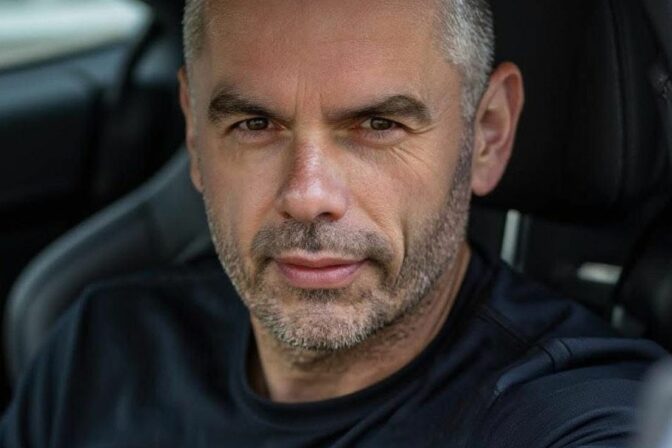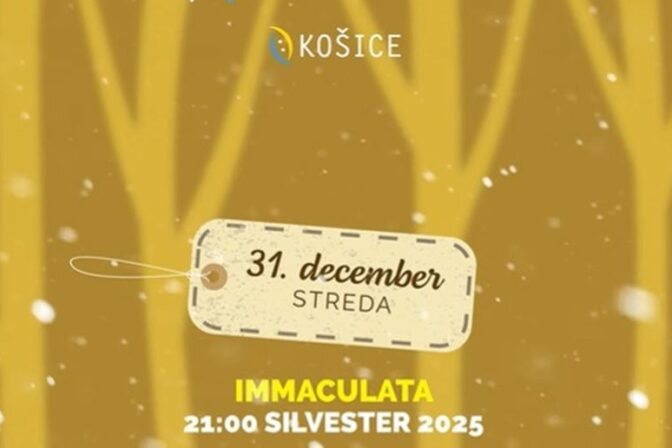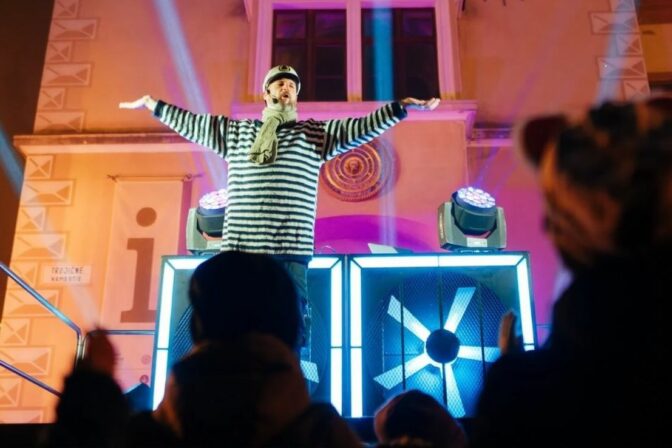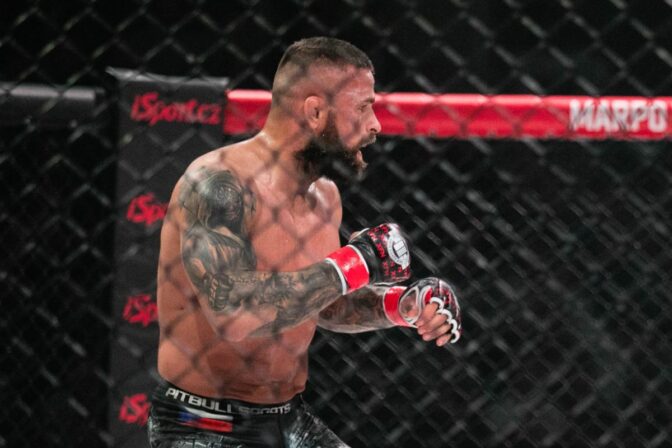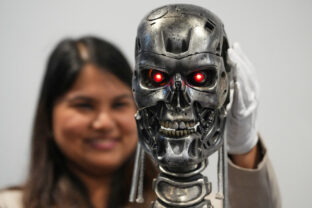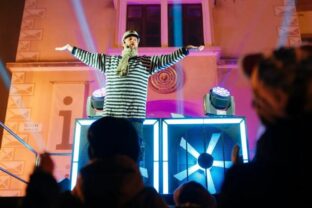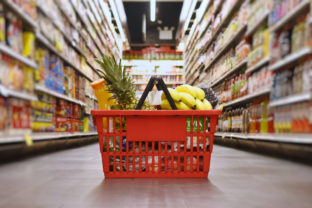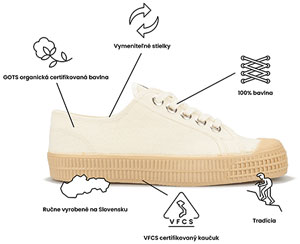The “adidas X Parley Run for the Oceans” is a global campaign aimed at protecting the oceans, fighting climate change, and preserving the environment and nature on our planet.
Today we bring readers an inspiring interview with the creator of the “adidas X Parley Run for the Oceans” campaign, Chris Thaller, who is co-founder and creative lead of Anything But Ordinary, a creative agency based in Linz, Austria.
In the interview, we asked Chris about the impulse that laid the foundation for the successful “adidas X Parley Run for the Oceans” campaign, as well as other interesting questions that connect environmental protection with a business.
Chris was a guest at the Eco conference organized by civic organization Planet Lover for students. The conference was held in Slovakia, in Žlina. Chris Thaller is a recognized speaker and creative lead and he comes from and lives in Austria. Alexandra Madrová, who is the ambassador of the SITA KLÍMA project and the founder of the civil organization Planet Lover, spoke with Chris. Among other things in the interview, we were interested in the story lying behind the idea of the “adidas X Parley Run for the Oceans” and the development of the adidas Running app, as well as how this great concept affects consumers and entrepreneurs around the world.
Hello Chris. Thank you very much for your time and the interview, in which we will mainly focus on the successful global campaign “adidas X Parley Run for the Oceans”. This project represents a huge positive step in the field of protecting the oceans, climate and nature in general. What was the key impulse for creating of this campaign?
Hello Alexandra and thank you very much for the invitation to the interview. It`s quite a long story behind the idea of “Run for the Oceans”, but the first spark ignited back in 2008 when I was living in Sydney, Australia. At the time, I lived right by the ocean and paddle boarded every morning. Manly, the place, where I lived, was beautiful, and one day during one of my sunrise paddle board sessions I found a plastic bag floating in the ocean, which I picked up and threw in the trash on the beach. At that moment I realized that this is not good and I knew I wanted touse my creative talent to do more about it or more against it. In 2008, however, ocean pollution with plastic waste was not a big topic. Only a few people and organizations such as the Sea Shepherd Conservation Society and some surf clubs, addressed the issue, but it was not the level of attention this topic receives today. In the end, it took me several years to figure out what I could do with this experience.
In 2012, I started working for a company called Runtastic – a mobile Health- and Fitness provider based in Austria that gathers and inspires millions of running lovers around the world. In 2015 Runtastic was acquired by adidas and gradually all the pieces of the puzzle began to come together. At that time, adidas had launched the amazing Parley running shoe product, a collaboration about running shoes made from recycled ocean-bound plastic and old fishing nets. At the same time, I was constantly thinking about how I may help with the issue of plastic pollution in the oceans. Consequently, I came up with a digital running competition concept, the basic idea of which was to inspire millions of people around the world to run with the intention to help the oceans.
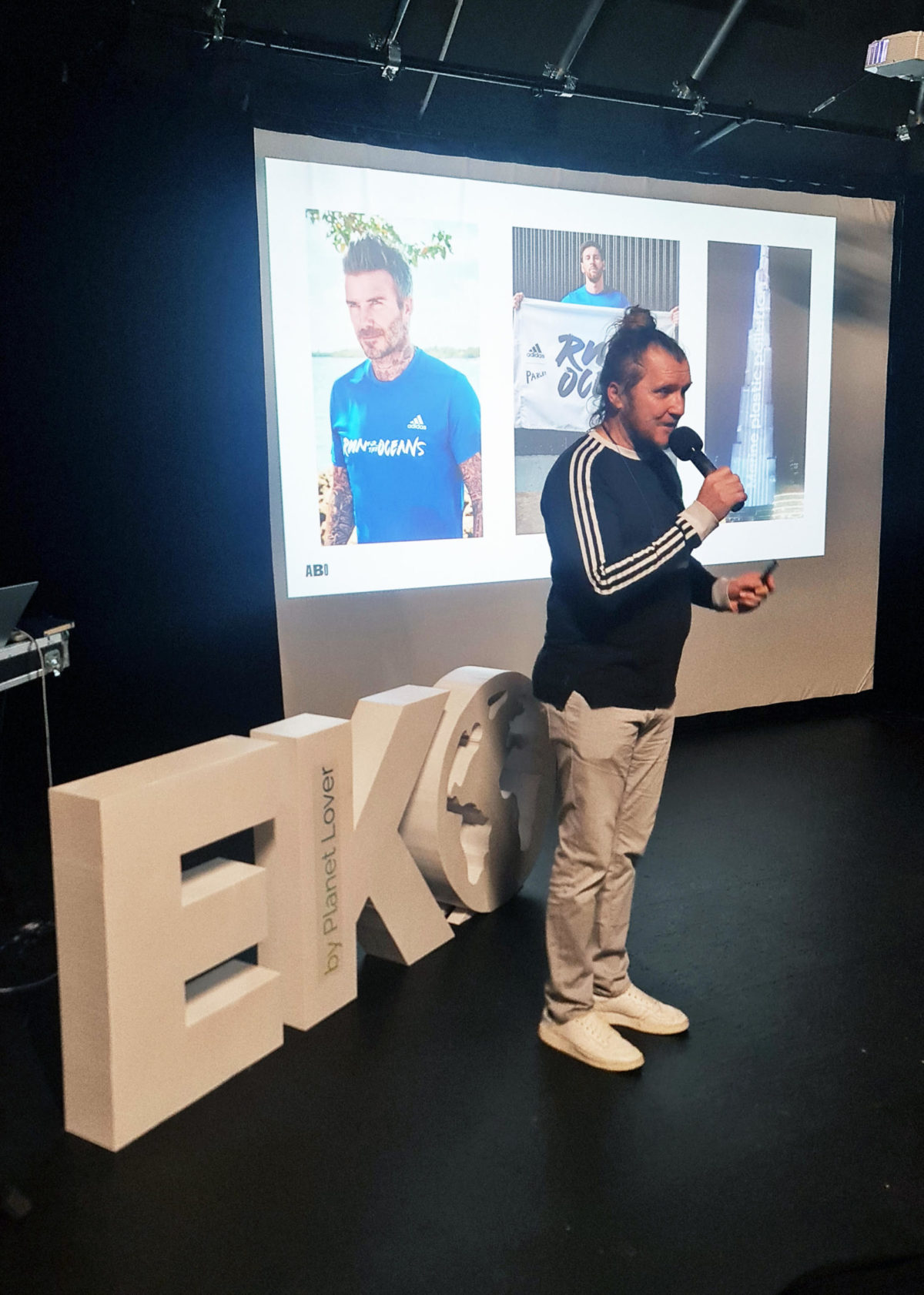
At the time, adidas was already the owner of Runtastic, and through its alliance with the Parley for the Oceans foundation, it brought to the world a simple and crucial message that everyone who gets involved can help protect the oceans from pollution.
When we heard about this campaign, we were positively shocked at the first moment that a global brand is trying to draw attention to this problem, or that it draws attention to an environmental issue in an interesting way. The first thing that occurred to us was that how is it possible that adidas launched such a huge project with this idea?! We also wonder how the management of adidas was convinced to accept this amazing project and how the whole concept was brought to life.
During that time, I was fortunate enough to connect with Eric Liedtke, the Chief Marketing Officer and Brand President of adidas. I didn’t have to convince him of the importance of our cause, as he too is committed to running a profitable business while also contributing to the betterment of our planet. In fact, he had been championing this idea for even longer than I ever had. Even back then, he was actively working to make adidas a sustainable brand, which is no small feat for a company of that size. It takes an immense amount of passion and relentless effort. When I approached him with my idea of mobilizing millions of users and consumers worldwide to protect the oceans and the environment, he responded with enthusiasm, saying „Let’s go ahead and create the largest movement in the world.“
Question: It sounds like a miracle that you found someone to support such an idea for such a large company. What happened next? What was it like from the beginning, from the very adoption of this idea to its practical implementation? Was it easy, or was the process full of struggles and various other obstacles?
Yes and no. First of all, it is important to say that when we came up with the idea and got approval for its implementation, is was January 2017 and we wanted to bring the project to life in June of that year.
So, we had 5 months at our disposal, which even for a start-up like Runtastic was really a short deadline. At first it seemed almost impossible to implement such a project in just 5 months, but we managed to do it and got 65 000 people into the campaign. As a part of our further work, we improved the campaign, while the number of participating users also increased on year-on-year basis. Currently, 14 million people worldwide have participated in the “adidas X Parley Run for the Oceans” campaign.
It`s like in everyday life, where we often start with small steps one after the other, until it eventually becomes the largest worldwide campaign for sustainability based on participants.
“Something like this is possible thanks to the power of a large brand, as well as digital community that has welcomed these efforts with enthusiasm,” added Chris Thaller.
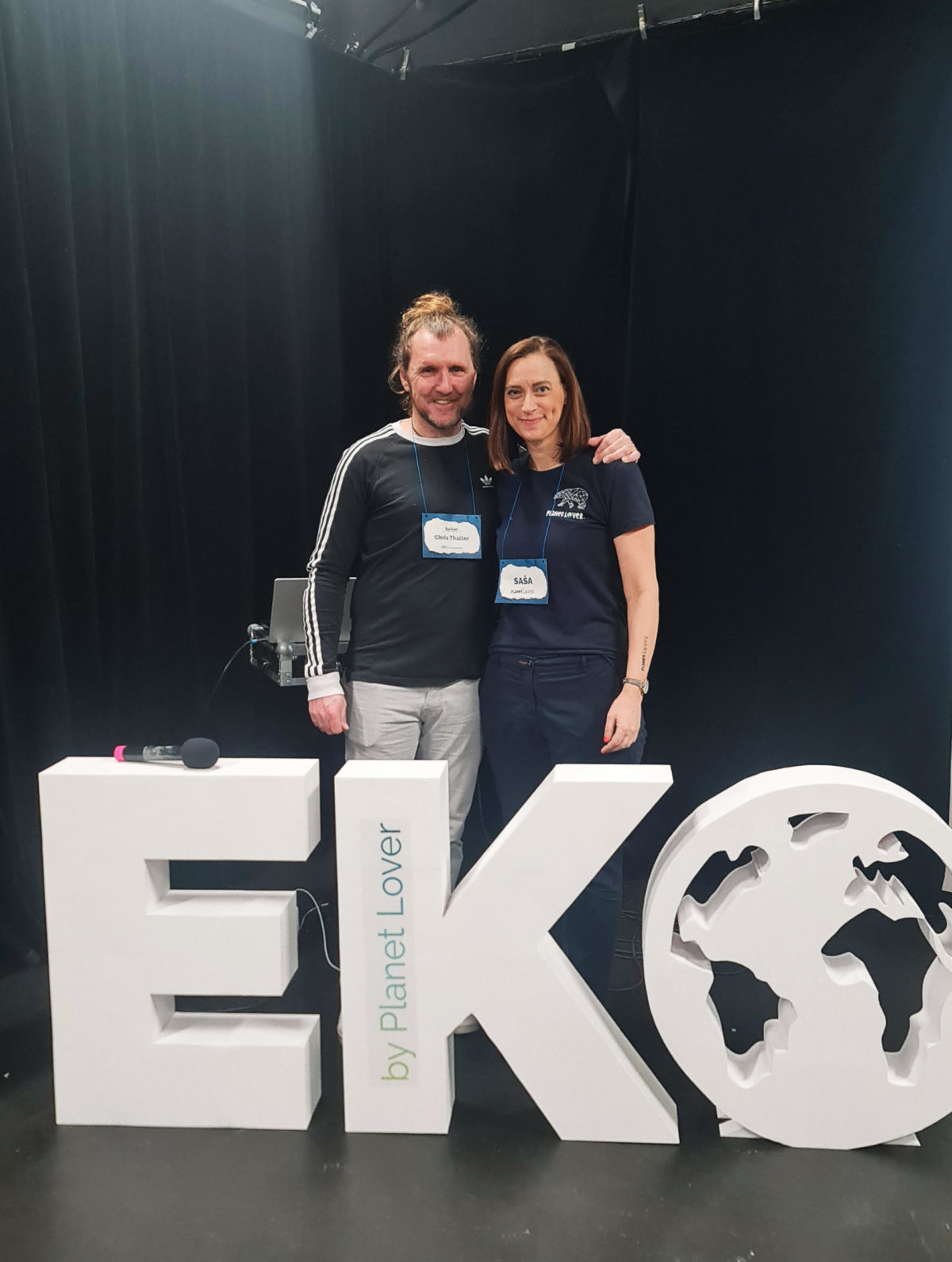
How were your expectations and did you have any at all? Did the company have any expectations from you or from the campaign itself? I ask this because in business practise we often witness how owners of large companies give the green light to certain projects, but they do not have any expectations or set any goals for them. Sometimes, it is because they are not convinced enough about the success of the presented idea, but they still want to try it. We also would like to know what was the reaction of adidas after the first year, if they were happy or how they felt about it all.
Yes, after the first year we worked on many improvements. We saw a positive response from a really large number of users and customers, and this drove us towards further innovations, as well as trying to reach more and more people on a year-on-year basis.
So, we had set certain goals (KPIs) regarding the number of participants that we would like to reach with the idea and concept every year. We had set goals and tried to fulfil them. Overall, it can be said that it is good to have a goal that we want to work towards. It is a good engine that helps us achieve the desired results while remaining creative, especially, if the visions are ambitious.
However, the company received an amazing feedback not only from participants and customers, but also from company employees. Many people consequently became interested in working for adidas and Runtastic, saying that they wanted to work for a company that deals with such matters. This is also a very important message for all entrepreneurs today that people want to have a job that is meaningful. Therefore, it is very important that entrepreneurs and companies show that their goal is not only to make a profit, but also to make the world a better place for all of us.
As part of the campaign, you approached many famous athletes and other sports legends around the world with an offer to become ambassadors of the project. How was it? Was it difficult to get them or make an agreement with them to promote this concept? How did they react to such an offer? Did they have any special requirements or were they not satisfied with something?
First of all, I would like to say that this was not my job, but it was in the competence of the adidas brand team. In practise, it usually works in such a way that when you have ambassadors for a project, contracts are concluded with them for the promotion of selected campaigns.
In this case, however, it was very interesting that all the ambassadors approached, among them for example Lionel Messi or David Beckham and many others, agreed on supporting this campaign.
You didn’t have to convince them at all that it was good and/or important because they too resonated with the idea and were convinced it was great to support it. Thanks to this fact, it was not at all difficult to create a group of current ambassadors.
Did this campaign for the oceans have a real impact on brand sales? For example, have the sneakers made of ocean-bound plastic, which adidas has been producing for several years in cooperation with Parley for the Oceans, started to sell more?
As I’m not an official adidas representative, I cannot provide you with any official numbers or conclusions. However, what I can tell, is, that the “adidas X Parley Run for the Oceans” campaign was the perfect ally to the brand’s existing adidas X Parley sustainable fashion efforts and it inspired a global movement aimed at ending plastic waste.
There is a lot of talk about greenwashing… hasn`t the company met with the “hate” this is just another attempt to raise sales at the expense of education? We know that you are strongly against greenwashing within the help to planet…
The answer: As a creative agency for sustainability, we have to make sure to not being part of any greenwashing scandal because it would destroy our own credibility. Organizations that aren’t yet perceived as fully sustainable brands and invest in advertising themselves as green are often accused of greenwashing. This is why we want to first clearly differentiate between Greenwashing, Greenwishing, Born Green and Green.
So let me explain the different terms:
- Greenwashing: Low investment, mainly in communications, low actual positive impact, or even worse, labeling negative impact as green.
- Greenwishing: Acknowledging your impact and being open about it, investing in sustainability efforts, and integrating sustainability into the organization’s strategy.
- Born green (“Green before it was cool”): Existing, small, often family-owned businesses that have close connections to their community and environment and think in generations rather than quarterly sales. They could be sustainable business model startups focusing entirely on solving the world’s problems with their products or services.
- Green: Companies that had created a negative impact in the past but found ways along their supply chain to make a circular business model or even give back to the people and the planet in the long run while still being (maybe even more) profitable.
Let’s explain this with the „adidas X Parley Run for the Oceans“ campaign. Run for the Oceans is the largest global sustainability campaign based on participants. In 2017, it was probably greenwishing, with only a few thousand shoes produced from recycled ocean-bound plastic. The market interest was there, the concept could be proven, but now most shoes are made (partly) from recycled ocean-bound plastic.
So what do you think? Does that make adidas green? Is it perceived as a sustainable brand? What I know for sure, is, that adidas is doing its very best to become a sustainable brand and to create as much measurable impact as possible. They want to change the world for the better based on their slogan #ImpossibleIsNothing.
Last not least, at my agency Anything But Ordinary, we focus on companies that want to get things done and that want create a real impact. At this stage, we’d rather see the majority of companies in the greenwishing stage, investing those “2 percent more” than having a few perfect organizations pointing fingers.
Thank you very much for the answers, and finally, I would like to ask what your next work plans are and what you want to do in your professional praxis. Will it be a similar mega campaign with millions of people around the world, or rather something smaller – local?
The answer: Currently, I mainly focus on my own agency Anything But Ordinary, while working with various small and large companies, helping them to become more successful by making their business more sustainable. If they are already working in this field, I help them to get closer to people, because that is also an important part of this process. Many companies around the world are doing amazing things in the field of sustainability and no one knows about them. In addition, we help them make the whole concept more fun so that it appeals to people and inspires them to do the same.
“It`s all about changing habits, our habits, through an authentic sustainability work. This is my job not only for companies like adidas and Runtastic, but for any other company that wants to work with us,” added Chris Thaller at the end of the interview.



